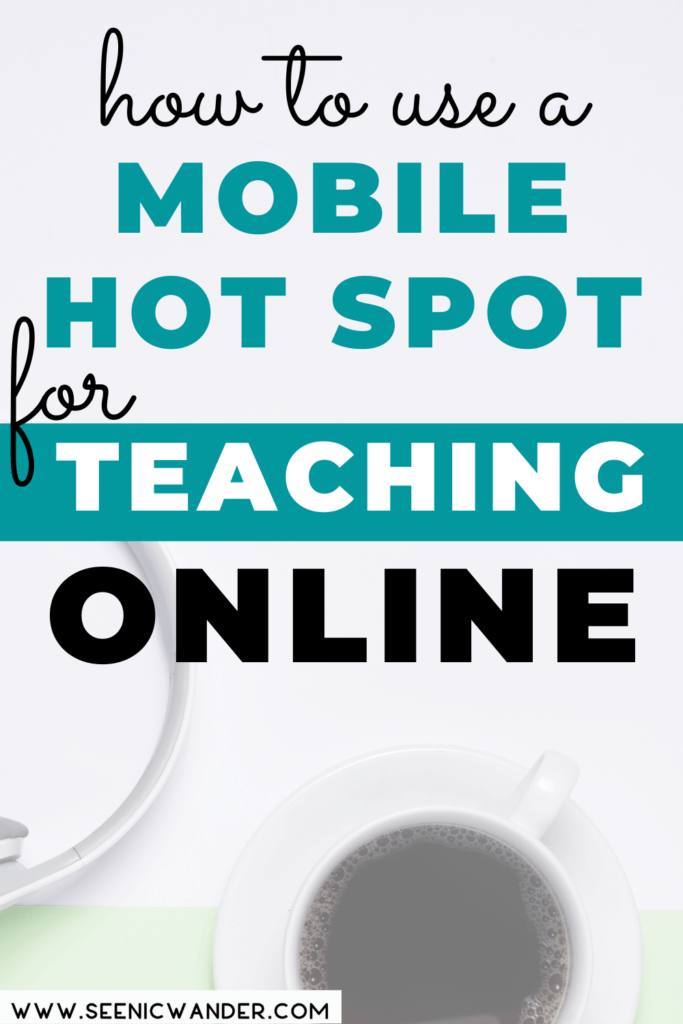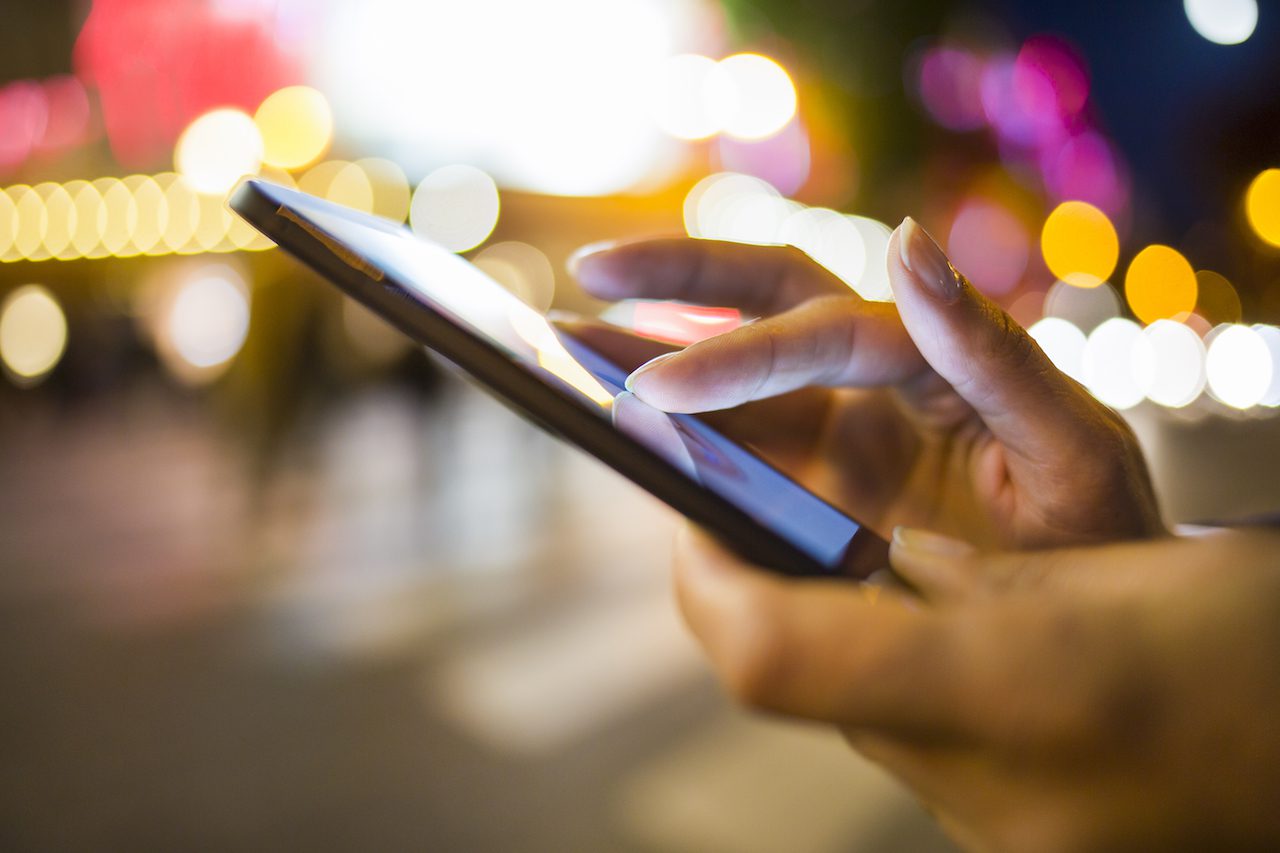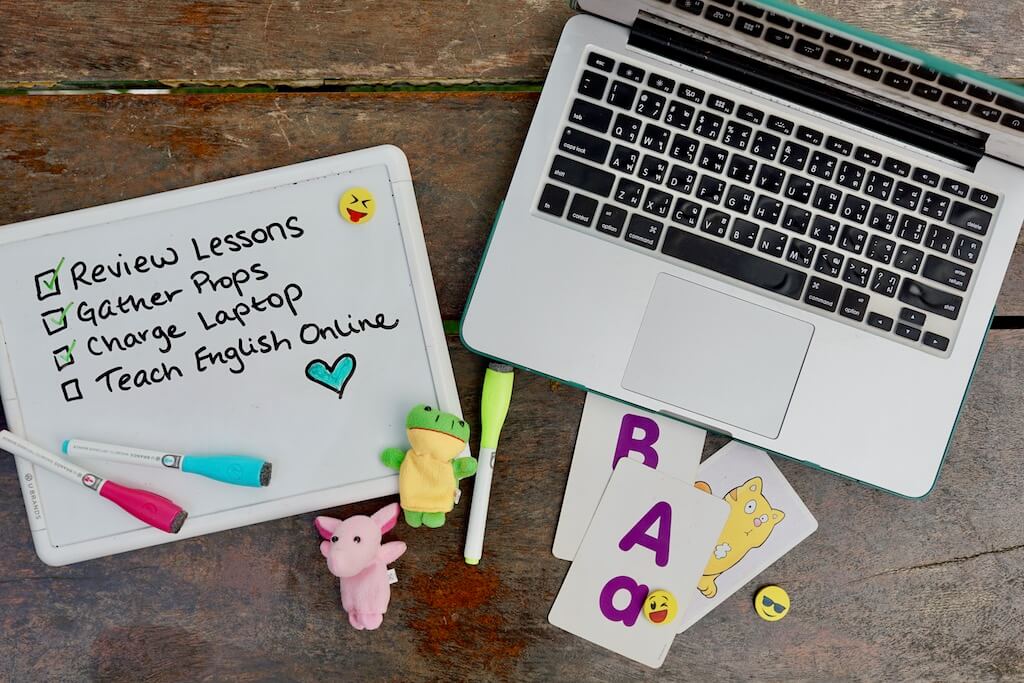If you teach English online, knowing how to use a mobile hot spot could help you avoid a teacher no-show in a pinch. In this post, we’ll talk about exactly how to teach online from a mobile hot spot!
Uh oh. You wake up, have your cup of coffee, and prepare to settle into a lovely morning of teaching English online, but then disaster strikes.
The internet is down. Your classroom won’t load and your sweet kiddos will be missing their favorite online English teacher.
You know that your company has a strict cancelation policy so you’re low-key freaking out. You can’t miss class. So what do you do now?
Luckily, a mobile hot spot can save the day!
Why Use A Backup Hotspot For Teaching Online?
If you teach English online, there’s a good chance you will run into internet problems at some point during your career.
It took me exactly two disasters (i.e. ugly cry in McDonald’s) to come up with a mobile hotspot system that works for finicky internet situations. After teaching online for over three years, having a backup hotspot plan will prevent unwanted headaches.
Many online English companies have strict cancelation policies. This is the trade-off for making your own schedule – you have to stick to what you choose. You get a very limited amount of cancelations and no-shows before your contract could be in jeopardy.
For example, with VIPKID, you only get six Teacher Cancelations or Teacher No-Show’s per six month period (you’ll only be docked for a maximum of two per day though, even if you miss more than that in a single day).
Here’s the tricky thing. Technically, the internet issues should count as a Teacher IT problem. Teacher IT problems are categorized differently than Teacher No-Shows and Teacher Cancelations. They aren’t as strictly punished because the company understands that things happen outside of our control.
But, if the internet goes down before you start classes that day, the company has no way of knowing whether it’s a legit internet problem or if you just wanted to sleep in. To get marked Teacher IT instead of Teacher No-Show, you’re going to have to prove that the internet was at fault. That can be difficult when you might not have access to the “proof” of an internet outage.
The solution? A handy thing called a mobile hotspot. Having a mobile hotspot backup plan in place will ease your stress should the worst happen. Let’s dive in.
How To Prepare In Advance
The first thing to do is ensure that you have a phone plan with some mobile data. You don’t need a ton since this will only be used for emergencies, but having some data available makes me feel more comfortable.
There are two metrics you want to look at when choosing a data plan for your phone: the amount of data and speed. The amount of data is measured in gigabytes (GB). Speed is measured in megabits per second (Mbps).
Some plans allow you to use a certain amount of GB of data over a certain time period. For example, you could choose to pay for 1GB/month.
Other plans might allow you unlimited data for a certain time period but at a specific speed. So you get unlimited GB of data at whichever speed you choose – 2mbps, 6mbps, or 10mbps.
As a rule of thumb, you can teach 10 online classes on about 1 GB of data. For speed, you want at least 6 Mbps or 4G. I know we all want to keep costs low so unlimited everything might be too pricey, but try to get a plan with at least 1GB of data and speeds of at least 6Mbps.
Voila! Your phone is ready to act as a hotspot should the internet go down during an online class.
When the WiFi Stops Working
So you’re teaching your little heart out and – uh oh – the internet decides it wants to be a diva. No sweat. Just grab your handy hotspot phone. (This is what I did to teach through a power outage!)
- Hit settings –> Personal Hotspot –> On.
- On your laptop, click the drop-down under your wifi symbol to see internet options. Click on your hotspot (it will probably be named something like “Sally’s iPhone”) and it will have a little icon of a chain link.
- Within a few moments, you’ll be connected to your handy hotspot. Refresh your classroom and things will carry on like nothing ever happened.
Preventative Measures
While this strategy works great in a pinch, we’d all prefer if things just went according to plan, right? Here’s how to ensure they do…
Test Your Internet Before Opening Slots
Before opening teaching time slots, ensure that you have a strong enough internet connection. You want around or above 20mbps. If you’re traveling to a new location, have your friend, family member, hotel, or Airbnb host run a speed test using www.speedtest.net to tell you how fast the connection is.
Ethernet Cord
If possible, consider teaching classes while connected to an ethernet cord. Even though this won’t change things in a full blown power outage, it could mean a more stable connection if your WiFi is on the weaker side.
Find The Website For Your Internet Provider
Find out what internet provider is used where you live and follow their website for reports of outages. This can be used as documentation in your favor in an event that the internet goes down and you get docked pay.
In both of my power-outage disasters, I had the “teacher no show” tags reversed when I provided information from the internet company saying that there was an outage during my classes. VIPKID changed the finish type to Teacher IT which is much less severe than Teacher No Show.
If you have internet issues while traveling, ask the person you’re visiting or your accommodation host to contact the internet company for similar documentation.
Keep Your Phone Charged And Nearby
Keep your hotspot phone beside you and charged while teaching. You need to be able to seamlessly transition to the hotspot and it won’t do much good if you have to run around your house looking for it.
The Take-Away
In an ideal world, WiFi would just work and we would always have fast connections. But unfortunately, sometimes unexpected things happen.
Having a mobile hotspot prepared in case the internet decides it wants to quit on you will save you stress and ensure a better learning experience for your deserving kiddos.
Have you ever taught online using a mobile hotspot? Let me know in the comments below!
Read More Teaching Online Tips
- Best Equipment For Teaching English Online
- How To Teach Online Classes In A Power Outage
- Ways To Stay Healthy While Teaching Online






Great post and great advice! I’m about to take my teaching abroad and super I’m nervous about it! Does vipKid allow you to teach via Wi-Fi? My current company insists on using Ethernet (wired) connection and it’s difficult to get accommodation with this facility in place – let alone high enough speeds! I may have to change companies 🤔?!
Hi! VIPKID requires a stable high-speed internet connection. Of course, ethernet is preferable when available, but I’ve never had any issues teaching from WiFi as long as it’s consistent and fast enough for a class. In my experience 20mbps or higher is preferable but 10mbps is do-able. I always travel with an ethernet cord in case I get lucky and can plug in directly. Also, you can ask about access to the router when you book an AirBnb which is helpful! 🙂 Let me know if you have any more questions!
Hi NIc. I really enjoy your website. I sold my business and my house and am traveling in my RV fulltime. Id like to be an esl insructor. But the wifi connections in the RV parks I live in are unreliable. So how do I teach online? I have a newer PC and an apple IPAD. I have a newer apple IPHone. What do I need to do to get set up?
Hi Gilbert! That sounds like such a cool way to travel! I’ve had no problems teaching from a mobile hot spot which would be compatible with your laptop or iPad. If you’re in the states, you would need to make sure you have a cell phone plan with data (for reference, you can teach about ten, 25-minute VIPKID classes on 1GB of data) and a smartphone with hotspot capabilities. This set up would only work if you’re traveling in an area with decent cell reception, but as long as you have data you should be able to connect your laptop to your hotspot connection on the phone. To test it, I’d recommend skyping a friend or family member using the laptop connected to the hotspot before booking any classes. This will let you know if your data speeds are strong enough for an online class! Hope this helps! If you have other questions, feel free to send me an email at [email protected]!
I’m not sure if I understand the unlocked phone. I have my old iPhone and my son’s old Galaxy. Both no longer are active on my mobile account, as we’ve upgraded devices, but we use them on our home WiFI. These phones could be used overseas just by purchasing a local sim card?
Hi Kathie! An unlocked phone is a phone that can be used on any network. Usually, to “unlock” an old phone like your old iPhone, you can just call the company that you used to have service through and ask them to unlock it. It should only take a few minutes. You can only do this with phones that have been fully paid off, I believe. Then, once you’re traveling, you can purchase a short term traveler SIM card specific to the country you’re in. You can choose how much data you want on the SIM card and for how long you want coverage. For example, in most places, you can buy a card with a week of unlimited data for a set price. Once the time expires the SIM card won’t work anymore unless you go back to the cell phone store and add more data to the card. Usually, this can all be handled in the airport when you arrive. 🙂 Hope this helps! If you have more questions, feel free to send me a message at [email protected] 🙂
This was such a helpful article! Thank you!❤
I’m heading to Canggu, Bali soon and I’ve been worrying about the dodgy internet. This is so reassuring and really helpful, thanks so much!
Any time!!! Definitely grab a local hotspot for Bali, the internet is known to be a bit funny at times. Also in the event of a WiFi crisis, the Tropical Nomad Coworking space has private skype booths and it’s a pretty reasonable daily price. 🙂